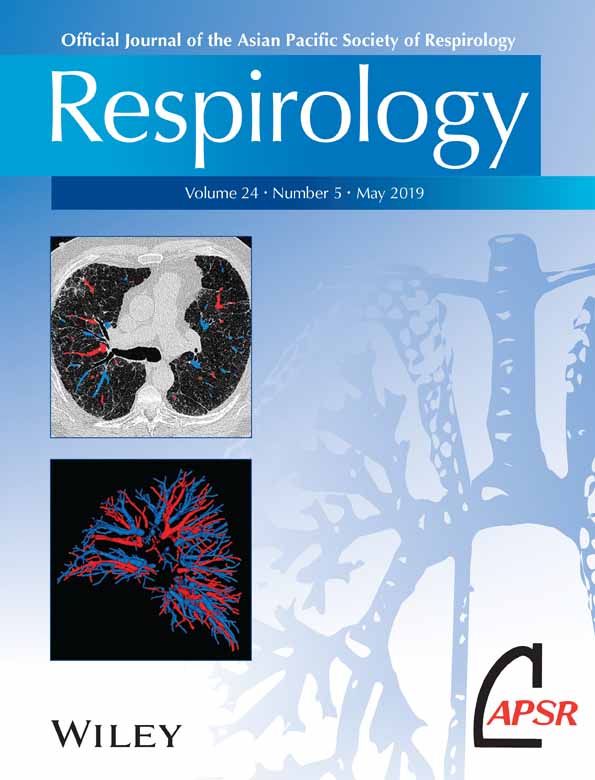ACCESS ALL AREAS: Electromagnetic navigation and the pulmonologist
Abstract
See related Article
The investigation of peripheral pulmonary lesions remains a common clinical problem in respiratory medicine. Minimally invasive biopsy is frequently required, and clinical decision-making generally requires the consideration of a number of clinical and radiological characteristics. Is the lesion more centrally positioned, with an air bronchus sign, in patients with significant emphysema? Bronchoscopic sampling would be associated with a high yield and favourable safety profile. Or is the lesion pleurally based, with no bronchus sign visible on computed tomography (CT)? In which case, CT-guided percutaneous biopsy will be associated with a significantly higher diagnostic yield with a low rate of complications.1
Complication rates following percutaneous lung biopsy are significantly higher than for bronchoscopic sampling, and so, bronchoscopic biopsy may be favoured as the initial diagnostic step.2 Systematic reviews report diagnostic yield for endobronchial ultrasound (EBUS)-guided bronchoscopy to be 73% and higher when combined with other guidance techniques, such as electromagnetic (EM) navigation (EMN)3-5 or virtual bronchoscopy.2 This remains lower than diagnostic rates for CT-guided lung biopsy.2 Regardless of which approach is chosen, non-diagnostic procedures frequently require the consideration of performance of the alternate approach, necessitating an extra procedure at a later date by a different specialist.
Developments in interventional pulmonology continue to incrementally improve the diagnostic performance of bronchoscopy in the assessment of pulmonary nodules. Of the currently available technologies, EMN bronchoscopy has the highest reported diagnostic sensitivity for the assessment of pulmonary nodules.2-4 Yields exceeding 90% appear possible with the most recent advances, such as bronchoscopic transparenchymal nodule access and robotic bronchoscopy, though these remain in development.6, 7
Pulmonologists need not be confined to bronchoscopic sampling to achieve tissue diagnosis of intra-thoracic lesions. The chest wall has long been recognized to be within the working field of the pulmonologist, with pleural diagnostic procedures, including pleuroscopy,7 predominantly performed by pulmonologists. Image guidance with ultrasound (US) for centesis or intercostal chest tube insertion has reduced complications and increased diagnostic performance and is now recommended by expert guidelines.8
Following the establishment of US guidance of pleural procedures, pulmonologist-performed US-guided biopsy of parenchymal lung lesions is now routine at many centres, with excellent diagnostic and safety profiles.9 There are now few areas, or approaches, the pulmonologist cannot take.
The best of both worlds might be imagined where patients would be able to benefit from an approach that affords them the safety of a bronchoscopic investigation whilst retaining the added diagnostic value percutaneous sampling can achieve. This no longer appears to be wishful thinking—recent advances in EM technology now permit pulmonologists to perform EM-guided percutaneous lung biopsy. In this issue, Mallow et al. present exciting findings regarding diagnostic outcomes and the safety of the technique.10
Importantly, EM guidance is planned from the same CT and is performed using the same software. Of equal significant value is the fact that the procedure can be performed in the same procedural suite and under the same anaesthetic. As the authors note, ‘If a diagnosis is unachievable with a bronchoscopic approach, the proceduralist can pivot again to perform an EM-guided percutaneous lung biopsy during the same procedural setting’. Earlier feasibility studies indicated that proceeding to EM-guided percutaneous added only approximately 20 min to the total procedure time.11
In this retrospective multicentre cohort, the authors report a diagnostic yield of 74%, comparable to studies of radial EBUS/EMN.2, 5 While the diagnostic rate is consistent with published bronchoscopic studies, adverse events, particularly pneumothorax, appear consistent with studies of radiologist-performed percutaneous biopsy. Importantly, the authors note the impact of institutional experience on complication rates, with one centre contributing 51% of cases to this retrospective cohort and noting an 18% adverse event rate compared with 27% at sites where less than 10 procedures had been completed.10
As with all new technologies, it remains to be determined how this modality may be incorporated into routine clinical practice, although the currently underway study (NCT03338049) is likely to address some unanswered questions. Patient selection in this retrospective study is not described, and it is unclear why some patients (number unspecified) underwent both EMN-directed bronchoscopic and percutaneous sampling. Interestingly, diagnostic yield appeared slightly higher (81%) in patients where both approaches were used.
In addition to patient selection, future studies will be required to determine the incremental gain achieved by EM-guided percutaneous sampling following negative ENB. Rapid on-site cytology was not used but may be an important element in intra-procedural decision-making regarding whether to proceed to percutaneous sampling.12 Optimal utility of this approach will likely be achieved when the proportion of patients requiring percutaneous sampling can be minimized.
Finally, while median lesion–pleura distance is presented, the proportion of patients where the lesion was in contact with the pleura is not presented. The authors do note that diagnostic yield was higher (85%) and pneumothorax rate lower (10%) in this group—these figures are slightly inferior to US-guided pulmonologist-performed lung biopsy.9 The real-time confirmation of lesion position, possible with US guidance, is likely to be responsible for this, and a blue-sky scenario might see EM-bronchoscopic and percutaneous navigation being combined with US-guided sampling to minimize complication rates.
The field of interventional pulmonology continues to be driven by both technological developments and by clinician researchers who can envision how these developments might be deployed in clinical practice, and who then undertake studies such as presented by Mallow et al. They have clearly established that pulmonologist-performed percutaneous biopsy using EM guidance is feasible and safe. It is another significant and welcome advance to the ever-widening field of interventional pulmonology.




